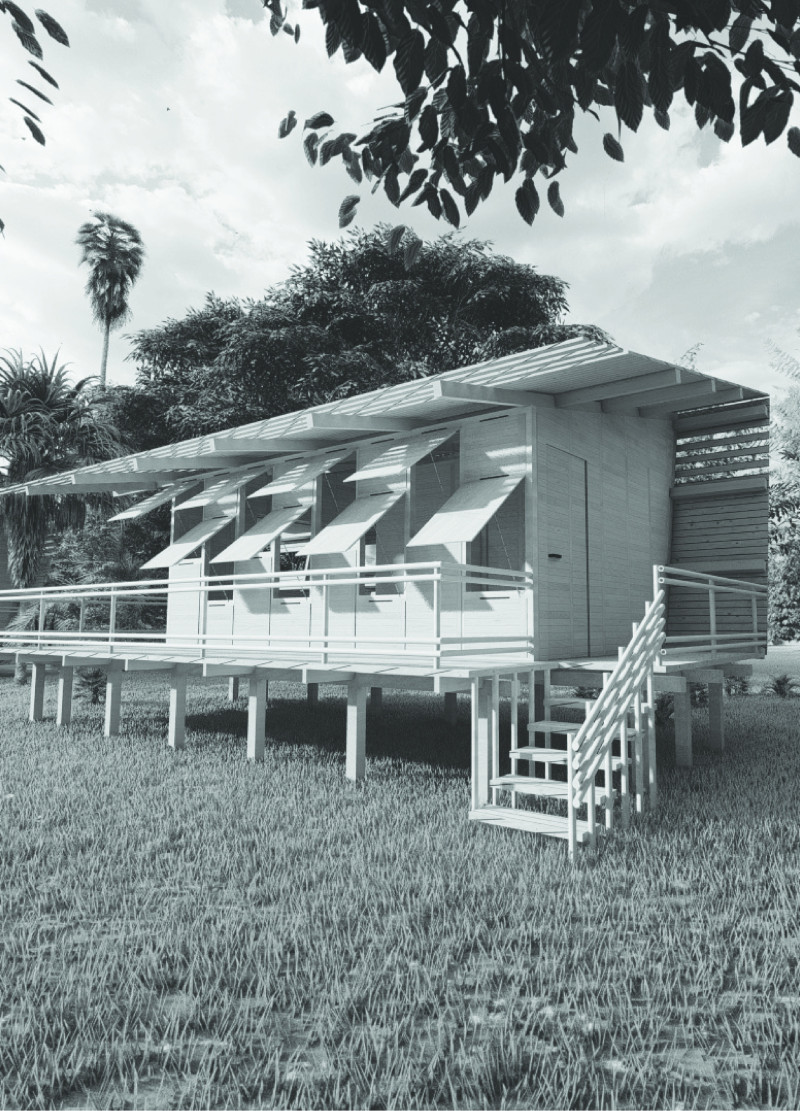5 key facts about this project
Sustainable Material Selection and Construction Techniques
The architectural design employs laminated timber beams as the primary structural framework and facade material. This choice of material not only ensures durability but also supports sustainability by utilizing timber sourced from responsibly managed forests. The facade consists of segmented panels that allow for modulation of light and airflow within the interior spaces. This operable design element enhances comfort, catering to Cambodia's tropical climate while promoting passive heating and cooling strategies.
In addition to timber, the project incorporates glass windows to maximize natural light and establish visual connections to the outdoors. These features contribute to an inviting atmosphere while maintaining the ecological integrity of the build. An elevated timber floor system further separates the living area from the ground, providing protection from humidity and ensuring adequate airflow underneath the structure. The incorporation of bamboo railing on the surrounding deck further emphasizes the project’s alignment with local material traditions and sustainability principles.
Unique Design Approaches Fostering Integration with Nature
Distinctively, the Hideaway Hut utilizes an architectural approach that embraces modular design. The internal layout promotes multifunctionality with provisions for sleeping and storage seamlessly integrated into built-in elements. This design method maximizes usable space within a limited footprint, effectively accommodating the needs of its occupants without compromising on comfort or aesthetics.
The roof structure extends outward with overhanging eaves, effectively shielding the building from the elements while creating shaded outdoor areas. These architectural choices not only enhance user comfort but also reflect a deeper understanding of climate-responsive design. Such considerations are vital in promoting long-term livability and reducing reliance on mechanical climate control systems.
The careful placement of the hut within the existing topography further supports its unique relationship with the site. The layout fosters a connection between the inhabitants and the surrounding natural environment, encouraging outdoor interaction and appreciation of the local ecosystem.
The Hideaway Hut acts as a model for sustainable living, presenting innovative architectural ideas focused on ecological balance. Those interested in gaining deeper insights into the project's design elements are encouraged to explore the architectural plans, architectural sections, and architectural designs that illustrate its thoughtful integration within the landscape. This exploration will provide a comprehensive understanding of how the Hideaway Hut achieves its mission of eco-conscious living while embracing its natural surroundings.


























